 |
 |
| Issue #105 • May/June, 2007 |
We don’t know how far back the domestication of animals goes. But we do know it is a process, rather than a single event. The domestication of the dog from its ancestor, the grey wolf, for example, may have begun some 17,000 years ago, but it also may have begun as many as 60,000 to 100,000 years ago. The reason scientists and others disagree on this is because, for tens of thousands of years, those first domesticated dogs too closely resembled wolves for us to recognize the difference when we found them in the fossil record.
What is domestication?
When we “tame” an animal we take a wild animal and make it not fear us. But we don’t change the makeup of the animal itself. But with the process of domestication, we change animals to make them more useful or desirable to ourselves. We breed them to enhance certain characteristics and actually alter their basic genetic makeup. Circus lions and tigers, for example, have been tamed, but not domesticated. However, the dog is arguably a domesticated wolf that has been considerably altered.
Most domesticated animals, such as dogs, cattle, horses, sheep, etc., are quite unlike their wild forebears. But in the last few centuries, there are notable exceptions that include animals recently “farmed,” such as catfish and even alligators which are now raised for their leather with little or no thought to directing their breeding to make them more docile.
We also breed some animals, such as the California condor, expressly to return them to the wild. And as long as 400 years ago, there were attempts to preserve, in their native states, species of wild cattle and horses from which today’s domesticated stocks are descended. Unfortunately, these attempts failed.
Otherwise, consciously or unconsciously, humans have directed the evolution of animals and plants they have domesticated in ways that have made them considerably different from their wild kin.
Animals were probably first bred to ensure their future offspring were more docile, less apt to roam off, and more productive. For example, sheep with the most desirable wool or the meatier bodies were bred to ensure future generations would be similar.
Sources of early domesticates
As with plants (See, Where our garden crops come from, Issue #104, March/April 2007), what animals ancient men captured and domesticated had to be the ones that were local to them. Later, animals may have been traded, stolen, or otherwise taken to new regions where they were raised and bred. For example, dogs, chickens, goats, and sheep have spread all around the world, far from the areas where they lived in the wild and where they were first domesticated. Explorers and colonists to the New World and Australia brought with them the animals they’d found useful in the Old World, sometimes with unintended consequences, as in the introduction of rabbits and other animals to Australia which are now considered pests.
But even if animals were traded or brought home as plunder from wars, it wasn’t enough to simply have the animal in hand. What a culture can raise also depends on the climate and geography of the area. You’re not likely to productively raise sheep in Point Barrow, Alaska, or find it easy to maintain a catfish farm in Death Valley, California.
Feral animals
It’s useful to understand what is meant when we use the word “feral.” Though sometimes used to denote any wild animal, the term is generally associated with domesticated animals that have escaped back into the wild. The American West now has many feral horses and burros that are either recent escapees or the descendants of escaped domesticates, and there are “wild” boar from coast to coast that are actually feral pigs.
But there remains the question of how well today’s domesticated animals would fare if they really had to go back to the wild. The answer depends on what type of country they’d have to survive in. There are feral cattle, sheep, goats, pigs, and horses in New Zealand where they can thrive in the absence of predators. But the great repository of feral animals is Australia. Cattle, camels, pigs, water buffalo, goats, horses, cats, and dogs run loose there. They’re changing the landscape, interfering with farming, and, at times, are a danger to campers, hikers, and others.
But when some camels escaped and others were turned loose after a failed experiment by the Army to use them as pack animals in the American Southwest prior to the Civil War, they did not fare well. Even though camels originally evolved here in the Americas (they are cousins of the llamas and alpacas of South America), the beasts’ numbers dwindled until there were none. The reasons for this could be they were hunted, some were captured and penned, that there may not have been enough of them to form a breeding population, or any of a number of good reasons. However, camels were also introduced into Australia where they not only survived, but thrived. Today there are more than 700,000 feral camels there, more than anywhere else in the world.
Also, on many islands, where there were virtually no other mammals, with the occasional exception of bats, sailors sometimes turned loose goats, pigs, and other animals, which were meant to become sources of food on later voyages. They gave little thought as to the ecological change that would be wrought.
Lastly, there is one domestic animal that went feral so long ago that it has adapted to the wild and is now considered wild, and that’s the dingo in Australia. The dingo accompanied humans as a domestic dog out of southeastern Asia thousands of years ago. Those that escaped have so adapted to that continent that it is proper to regard them as a wild species of dog and not a feral animal.
The importance of domestication
With domestication man was able to create and ensure a more reliable supply of food, fibers, and leather. Cities could not exist without domestication.
Although here in the United States we may think of cattle, horses, goats, pigs, etc., when we think of domesticated animals, in other parts of the world there are animals that have been domesticated that are rarely seen here in North America, such as water buffalo, yaks, and camels.
There are also animals that, though once rare here, are seen more and more frequently, such as alpacas, llamas, and reindeer (caribou). And there are animals that are native to North America, but have only recently begun the process of being domesticated, such as the American bison, whose domestication began in the latter part of the 19th century, and deer which have been “farmed” since about 1970. Though both are native to North America, they can also now be found being farmed in other parts of the world including Australia.
Last there are animals which have been important as domesticated food animals in other cultures but not here, such as guinea pigs (which are not pigs; they’re rodents). And, of course, dogs and cats have been raised for food in various cultures.
Dogs
Dogs are special. The dog is one of the three animals most likely to be found on a farm. Though we’ll never know for sure, we’re fairly certain dogs were the very first animals domesticated. Before modern times, they also became the most widespread of all domesticated species, having accompanied us and been the sidekicks of ancient men on every continent we came to inhabit.
|
Because they were found in so many cultures, the dog was the one animal we were sure had been domesticated independently by several cultures. But recently, after completing analysis of the mitochondrial DNA in many dogs, some researchers have concluded that all domestic dogs are descended from just a few wolves that were domesticated some 15,000 years ago in ancient China. Even the dogs discovered among the American Indians, when Europeans first came to the New World, appear to be descendants of those first domesticated dogs which originated in Asia and accompanied the ancient men who crossed the land bridge that formed between Asia and Alaska during the last ice age.
More so, it’s almost uncanny the way dogs relate to us. It’s not difficult to see why they’re called “man’s best friend.” Like no other animal, we come to think of them as “one of the family” and they have apparently come to think of us as part of the “pack.” With traits like these they didn’t tend to wander off and not only did we welcome them into our lives, they welcomed us into theirs.
As with anything else we’ve domesticated, when we’ve bred dogs we did so to bring out out the attributes we found most useful or desirable, attributes that made them serve us better, become more akin to us, and recently to make them “prettier.”
What did dogs give up in becoming domesticated? Overall, they are generally not as big or as hardy as their wolf ancestors. Also, proportionally, dog’s brains are about 20 percent smaller than their wild forebears. However, in exchange, when they’re cared for, their lives are generally easier and they have longer life spans than any of their wild brethren.
In the meantime, men have tinkered with their genes creating various “breeds,” particularly during the last 500 years. Until the 19th century, dog breeds were still generally developed for specific, utilitarian purposes such as hunting, for the herding and protection of sheep, goats, and cattle, and even war.
|
|
Among the “oldest” breeds of dogs, that is, the ones whose DNA most closely resembles that of their ancestral wolves, are (in alphabetical order) Afghan hounds, Akitas, Alaskan malamutes, basenji, chows, Lhasa apsos, Pekingese, salukis, Samoyeds, shar-peis, Shiba Inus, shih tzus, Siberian huskies, and Tibetan terriers. There may be other breeds, for example, the Norwegian elkhound, that have not yet had their DNA analyzed, that may yet join this list.
But with the 19th century, we see the breeding of ornamental dogs, that is, dogs for show. There are now something like 400, and perhaps as many as 800, breeds of dogs that range in size from Chihuahuas (the smallest) to English Mastiffs (the largest). No one knows exactly how many breeds there are and new ones are constantly being created. But for all their differences they’re all the same species of dog.
Domestic dogs can still breed with most of their wild cousins including wolves, coyotes, jackals, and dingoes, but apparently not foxes. But interbreeding rarely takes place in the wild because wolves, coyotes, and other wild canines would usually rather eat Rover than breed with him or her.
Dogs display their best form when they’re “working.” This not only includes dogs such as heelers when they’re herding sheep or cattle, but even the family mutt who often serves as the first line of defense on the family farm or even in the city apartment. Compared to us, they are supersensitive to sounds and smells. They can be vigilant and loyal, and because they see us and themselves as part of “the pack,” some will defend the homestead and family members to the very death. It is these attributes of bonding with us and protecting us that made dogs useful to our “caveman” ancestors and still serve us today.
Cats
Cats, of course, are the second animal one is most likely to have on a farm. Even if we have no other animal, we’re likely to have cats for vermin control.
Domestic cats are not likely to have come along until after the founding of the first cities. Of course, there are those who maintain that cats have never been domesticated.
Fossils of small, wild cats from 12 million years ago are remarkably similar to modern cats. From the cat lover’s point of view, this may mean that once you got the pattern right, there was no way to improve it.
By the dawn of civilization these small wild cats inhabited every continent except Australia and Antarctica. But since being brought there by Europeans, feral cats can be found in almost every part of Australia and they are a problem that is not going to go away. (Australia is also home to the native marsupial cat which is not a feline at all.)
Cats were domesticated long after dogs were. The current thinking is that they were first “tamed,” but not domesticated, out of the wild around 7500 BC along the Mediterranean.
Conventional thinking also has it that they were probably domesticated at different times in different parts of the worldin the Indus Valley of present-day Pakistan in Asia, in Egypt, and perhaps even among the Incas in South America.
The domestic cats that spread over Europe came from Egypt. Although there is evidence of housed cats in Egypt as early as 2500 BC, there’s no evidence these were yet domesticated cats. More likely they were simply wild cats that had been tamed. However, by about 1650 BC, we have the first real evidence the Egyptians kept domesticated cats. They venerated them, kept them as royal pets, and even embalmed, mummified, and buried them with their masters.
The Egyptian goddess of fertility, Bastet, daughter of the sun god, Re, was originally portrayed with the head of a lioness but eventually was depicted with the head of a domesticated cat. Eventually, people brought their dead, mummified cats to her temple at Per-Bast. When the temple was excavated in modern times, more than 300,000 mummified cats were discovered there.
Once they were domesticated, the export of cats from Egypt was forbidden, but by 1400 BC the domestic cat had reached Greece and, by 1000 BC, they had been spread all around the Mediterranean basin, most probably from Phoenician trading ships where cats would have served to keep rodent populations in check. From there they spread throughout Europe.
Since that time, they have come into or fallen out of favor. The Romans preferred the mongoose for rodent control, but, eventually, cats took the place of mongeese too.
In 1233, Pope Gregory IX denounced the black cat as diabolical in a Papal Bull, Vox in Rama. Thus began the cat’s slide from favor and, throughout the Middle Ages, many in Europe saw all cats as witches and they were often hunted down and killed. Sometimes, women who kept cats were accused of being witches and out came the pyromaniacs who burned many a poor woman at the stake simply because she housed felines.
But the last laugh was with the cats. It’s thought that cats were originally drawn to civilization where they could feed on the rodents that were attracted to the cities’ granaries. But as the cats were persecuted and their numbers diminished, the rats’ numbers increased. Unbeknownst to people of the times, the rats carried the fleas that transmitted many diseases including plague. (See, Rodents carry disease, ruin food, and gnaw everything, in this issue.) The result was that the rat population exploded, diseases spread in their wake, and when the plague appeared, at least a quarter and perhaps as much as a third of all the people living in Europe at the time died. Could the cats have “saved” some lives? Probably, but we’ll never know.
Of course, not all the cats were killed, papal bull or not, and despite their persecution, they managed to survive. Many were given refuge among the rich and they were even kept in many church communities where their ability to control rat and mouse populations was appreciated.
In contrast to their experience in Europe, in other parts of the world cats were almost always accepted, from Japan to the Moslem countries of the Middle East. Mohammed himself may have kept cats.
The first domestic cats to come to North America accompanied the colonists and traders and, as always, there were cats that escaped off European warships because since the time of the Phoenicians, cats have been kept aboard ships to control rat populations.
Today, our cats have replaced many of the natural predators that fed on birds, rodents, lizards, and other small animal life. To some this is a real tragedy as they fear that domestic cats may drive some birds, small mammals, reptiles, and amphibians over the brink into extinction.
But whatever they do, cats are now a permanent part of the human condition and we’re not likely to see them go away, particularly on the farm.
How many breeds of cats are there? With dogs, most people can name a dozen, two dozen or more different breeds. With cats, the average person might name two or three. I’m guilty of that. But there are dozens ranging from Abyssinians that look like their wild ancestors to Himalayans that look like dust mops without handles, and new breeds are constantly being developed. But unlike dogs, which until recently bred for utilitarian purposes, cats were generally bred for their appearances and dispositions alone.
If humans were to disappear, many breeds of cats, especially the really long-haired ones whose fur is in constant danger of matting unless they’re kept clean, would disappear along with us. But, as in Australia, the cat would adapt and do just fine without us. But it’s worth pointing out that though most cats, except for lions, tend to be solitary animals that only come together to mate, there is one other notable exception, and that’s the domestic cat when it goes feral. When domestic cats are released into the wild, they tend to form colonies. Whether this is a permanent change in their DNA that is the result of domestication and whether it’s even a desirable survival trait if they have to revert to the wild, no one knows. But in Australia it doesn’t appear to be a trait that is selected for in the wild. So we can assume they would become solitary creatures again.
Horses
From the fossil evidence, we know horses first evolved here in North America some 54 million years ago during the Eocene. This was about 10 million years after dinosaurs became extinct. But you wouldn’t have recognized them as early horses because they only stood some 10 to 20 inches tall and had four toes on each of their front feet and three on each of the back. (The hoof on each foot of the modern horse is the middle toe, all that remains, though vestigial toes can be found on some horses.) Their introduction into the Old World was probably through the temporary land bridges that formed numerous times over the eons between Alaska and the easternmost tip of Russia, in what is now the Bering Strait. From there they went on to inhabit Europe and Africa where they evolved into other animals such as the wild ass, the zebra, and the modern horse.
However, after more than 50 million years of living here, all the horses of North and South America disappeared about the same time mammoths and saber-toothed tigers disappeared and humans arrived in the New World. Whether there’s a connection between the arrival of humans and the extinction of these animals is a subject of debate.
For the next 11,000 years there were no horses in North or South America. When the Spanish first arrived in the New World, they reintroduced them. But these domesticated horses were far removed from the animals that had evolved here. And though there are wild horses and burros that run through the American West today, virtually all of them are descendants of the domesticated animals that have escaped over the last few centuries.
Though it was once thought the immediate ancestor of the modern-day horse came from wild stock that roamed through southern Russia, it now appears, from DNA evidence, that horses are one of the animals that was domesticated in more than one place and at more than one time. Many experts think they were first domesticated around 4500 BC in what is now Ukraine. However, the first indisputable evidence for their domestication comes from excavations that date back to about 2000 BC where archaeologists have found horses entombed with chariots.
Once ancient men started domesticating them, horses became popular, and by 1000 BC their domestication had spread throughout Asia, Europe, and North Africa. Horses had more uses than almost any other animals we’ve domesticated. They were used as draft animals; for meat, dairy, and leather; they could be be both ridden and used to pull carts as transportation; they could be used for hunting; and they were fearsome weapons of war. Perhaps only camels come close to being as utilitarian.
Sadly, one thing we are certain of is that the wild forebears of today’s domestic horse are now extinct.
|
The wild horse, called the Przewalski’s horse, is the last truly wild horse, and though a cousin of today’s domesticated horse, it’s not an ancestor. It is named for Russian General Nikolai Przhevalsky (1839-1888). (Notice, the spelling of the horse’s name differs from the general’s because the generally accepted name for the horse is the Polish spelling, not the Russian spelling of the general himself.)
There’s a question as to whether the Przewalski is a separate species from the modern horse or a subspecies. They have a different number of chromosomes, 66 for the Przewalski and 64 for the modern horse. However, one of the generally accepted determinants for whether two animals are the same species is whether they can breed and produce fertile offspring. In the case of the Przewalski and the modern horse, they can, and they produce offspring that have 65 chromosomes.
There are roughly 1,500 Przewalski’s horses now in the world with about 250 of them roaming in the wild. All 1,500 are descendants of just 31 that were still alive, and in captivity, in 1945the end of World War II.
Another wild ancient horse was the tarpan, which is one of the ancestral wild horses of the domestic horse. Drawings of these animals have been found in the paintings on cave walls in Spain and France, and it was the horse domesticated by Scythian nomads as much as 5,000 years ago.
The tarpan survived into modern times but, treated as a pest by European farmers the same way wild mustangs are now treated in the American West, the last of the wild tarpans died out near the end of the 19th century. They finally became extinct when the very last of them died on a game preserve in the Ukraine in 1876.
Did I say gone? Early in the 20th century, the brothers Heinz and Lutz Heck, two German zoologists, reasoned that the genes of the tarpan horse still exist in many modern horses and began a “bred back” program to bring back this horse.
They’ve gotten results and there are now about 100 of these horses in the world with half of them now in the United States. They’re called Heck horses. But are they “real” tarpans? Probably not. But they look a lot like them, and barring some scientific miracles with tissue samples of some long-dead tarpans, it appears that this is as close as we’re going to get to them.
The explosion in the number of different breeds of horse for show or pleasure riding is mostly a modern phenomenon. In ancient times those who could afford to selectively breed horses were more likely to breed them for war or commerce. Mounted soldiers and charioteers were often feared on the battlefield because of the speed with which they could maneuver, and cavalry was an essential part of almost all armies until the 20th century. To this end, they were bred as war machines.
Most notably this occurred among the Mongols. Although their army included an infantry, it was largely because of their unique horses that they were able to create an empire larger than any that ever preceded them. Each Mongol horseman brought with him several horses to ride as their army swept across Asia and pounded at the gates of Europe. The Mongols’ horses were smaller than the horses bred in most other cultures, and they were not sprinters. However, the Mongols themselves were smaller and dressed lighter than their enemies, and their small horses had incredible stamina in that they could travel at a loping gait with their rider 100 miles in a day. This was further and faster than any other army until the 20th century.
Though the Mongols chose a unique breed of horse for their conquests, among Europeans of the Middle Ages the preferred warhorses were those that could readily carry fully-armored knights. Thus were bred large horses called destriers and other horses, though not nearly as large, called coursers and rounceys. The destriers weighed almost twice what the average horse now weighs and they were considered formidable weapons of war. The other two breeds, though capable of carrying somewhat lighter loads, were also less expensive to maintain and therefore more suitable for poorer knights. But these “poorer” horses also had the added advantage of being better all-around horses than the destriers and were capable of the quick hit-and-run raids destriers were poorly suited for. Many of the large draft horses we see today are descendants of these medieval war breeds.
Arabs, on the other hand, looked for a horse that could carry a light load quickly through arid country. Thus they bred a horse we’ve come to know as the Arabian.
And it goes without saying that the first man to have a horse used him as a tool, but as soon as the second man had a horse, they were making bets as to whose was fastest and from this there arose a market for thoroughbreds and quarter horses. Today, a stallion that wins one or more legs of the Triple Crown (the Kentucky Derby, the Preakness, and the Belmont Stakes) can earn a fortune for its owner as a stud horse used in the hopes of breeding future generations of horses for speed.
Eventually, horses were bred purely for pleasure riding, for pulling carriages, and for horse competitions such as dressage and rodeo.
Though once important for work on the farm, today’s horses serve mainly for pleasure. The work is done by tractors, wars are fought with machines, but horses continue to be loved by those who fancy them.
Cattle
The ancestor of today’s cow is the auroch. Paintings of the large bull-like animals with the lyre-shaped horns that were found on cave walls such as those in Lascaux, France, and Cantabria, Spain, are aurochs.
Aurochs are thought to have first evolved in India some two million years ago. As they migrated off the Indian subcontinent, they formed three species, all of which are now extinct. Modern cattle come from the domestication of one of the three subspecies, Bos primigenius primigenius. Of the three subspecies, this one survived until recently. The last auroch, a female, died on a royal game preserve in 1627 in Poland.
Some taxonomists today consider domesticated cattle to be a subspecies of the auroch and call it Bos primigenius taurus. Others consider it a separate species, Bos taurus. All of today’s domesticated breeds, even the largest Spanish fighting bulls, are smaller than the auroch.
In the 20th century there was an effort to breed back cattle to bring back the aurochs. The theory is that a species is not extinct if its genes still exist in it descendants. Today there are Heck cattle, named for Lutz and Heinz Heck, the same German brothers who who attempted to breed back to get the “original” horse. They began crossbreeding various breeds of modern cattle in an attempt to recapture or restore aurochs. What they got morphologically resembles the auroch, though it’s smaller. The attempt continues to this day.
Domestication of the auroch is thought to have begun sometime between 6000 and 5000 BC in the lands between the Black Sea and the Caspian Sea in what today is called the Caucasus. Through selective breeding the auroch was changed until, today, we have modern cattle which are smaller, milder-tempered animals.
Cattle figure prominently in the history of the American West. Among the more interesting breeds to arise are the Texas longhorns. They’re thought to be descended from the cattle brought to the Americas by the Spanish in the 16th and 17th centuries, which escaped captivity, English cattle that also had become feral, and hybrids being developed by some American Indian tribes. By the late 19th century, they had naturally blended into a breed never seen before.
Because they developed in the wild, longhorns were leaner and hardier than other breeds, more disease-resistant, and could live on barren land where other breeds fared poorly.
|
Though not a breed developed by man, these cattle became a mainstay of the postbellum Texas economy and would remain so until they were displaced in the market by the faster-maturing and more docile English breeds.
When they fell into disfavor, the breed almost became extinct. It was saved from this fate by the U.S. Forest Service in the early 20th century when members of the Service put together a herd of them and located them on a refuge in Oklahoma.
Gradually the herd got larger and, though initially little more than a curiosity and a link to the historical past, the longhorn’s hardiness and resistance to disease was finally valued and various breeders began to use them to improve their own herds. Longhorns are now kept on many ranches in the West and Southwest, especially Texas where they’re living links to the past.
Today there are feral cattle running wild along the border of the United States and Mexico. The bulls are fearsome and some people enjoy hunting them, likening them to the fiercest Cape buffalo in Africa.
Although in movie renditions of the settling of the Old West, horses are shown pulling the Conestoga wagons across the prairies, in truth it was mules or oxen (which are castrated male cattle) that pulled these wagons across the plains. Both animals, especially oxen, have more stamina than
horses. In fact, using teams of horses to pull these heavy wagons was a good way to ensure you didn’t make it to your destination.
Cattle are no longer used in this country for transportation. However, as we know, there’s still a huge demand for them as sources of beef, milk, and leather and they are raised both commercially and on the self-sufficient homestead.
Unlike horses, cattle are still bred almost exclusively to increase their utility. We still look for breeds that produce more meat faster, leaner meat, more milk, or to produce a suitable combination of these attributes.
Today, when selecting cattle for the homestead, we have to decide what we want: beef, dairy, or both. There are more than a hundred breeds to choose from and only a few can be mentioned here. But among the beef cattle many have had success with Limousin, which produces a very lean beef; Angus, a very popular breed in the United States that is hardy, adaptable, produces a marbled meat, and is good-naturedall pluses on a homestead; and Hereford, a popular breed all around the world. Herefords produce a high-quality meat and are among the most adaptable cattle, faring well in all types of climates. They are also easy to manage, making them ideal for many homesteads looking for a beef cattle.
Then there are dairy breeds. A productive dairy cow can produce more milk than a family can consume. But the milk can also be used to make cheese, yogurt, butter, and ghee(a type of clarified butter that is excellent for high-temperature cooking), cottage cheese, and ice cream. On the small homestead, excess milk can also be used to feed pigs, chickens, and other animals. Among the better dairy cows for these purposes are Holsteins, the most widely used dairy cow in the world; Guernseys, which are prolific milkers and produce a high quality milk; and Jerseys, which are smaller and are docile. Along with Guernseys, Jerseys produce a great deal of milk for their size, and their milk has a very high butterfat content.
There are dual breeds which are both good milkers and decent beef cattle and are likely to appeal to the self-sufficient homesteader. Notable among them is the Brown Swiss. These are extremely docile but also extremely hardy animals that are not as susceptible to cattle problems as other breeds.
Goats
Sometimes called “the poor man’s cow,” goats provided ancient men with meat, milk, hides, and wool, and they do the same for us today. They can even be used as pack animals. These attributes, coupled with their ability to survive in poor and even harsh conditions, with meager forageand the added bonus that they are easier to maintain than cattlemake them an ideal animal for many homesteads.
Though not a big staple in agriculture in the United States, where there are only a few million, there are an estimated 700 million goats in the rest of the world and they are raised on every continent except Antarctica.
Goats are related to sheep and were probably domesticated about the same time as they were.
While the wild ancestors of horses and cattle are now extinct, the wild relatives of both goats and sheep still survive in the wild. The goat’s wild ancestor is the bezoar goat which was first domesticated around 8000 BC in that part of the Middle East that runs from the southeastern part of the Mediterranean to the northern part of the Persian Gulf that we now call the Fertile Crescent.
Since goats will eat almost any kind of vegetation, they are handy for brush control which makes them even cheaper to feed. And because they often prefer the “unwanted” brush over grass and clover, they can keep a field clear of these plants without competing for vegetation with cattle and sheep. They will even eat and are impervious to many noxious weeds that can create problems in cattle and sheep.
Goat meat is somewhat leaner than beef or meat from sheep and its taste is somewhat similar to some venison, although some people do not care for it. Their milk is naturally homogenized, suitable for many who are lactose intolerant, and it can be processed into many kinds of cheese. Depending on the breed of goat, their hair has many uses. Angora goats are the source of the long, fine silky hair called mohair. Kashmir or Cashmere goats are the source of cashmere wool. Finally, their hides are often used to make the softest leather goods including gloves, boots, and jackets.
|
As to breeds, it depends on what you want them for. For brush control, almost any goat will do.
For their hair, nothing beats a Kashmir or an Angora.
The best dairy breeds are Alpines, LaManchas, Nubians, Oberhaslis, Saanens, and Togenburgs.
Meat breeds include Myotonic, Nubian, Pygmy, and Spanish, but the best meat breed of them all may be the Boer goat that originated in South Africa and was developed primarily as a meat animal.
If allowed to, feral goats do very well in the wild. Australia has more than its share of them. They were also one of the animals sailors turned loose on islands to ensure an available food supply. In Hawaii, feral goats, along with feral pigs and Axis deer imported from India and set loose, are considered pests.
Sheep
Today, there are more than 200 breeds of sheep. From DNA studies, we now know they are all descendants of two types of wild sheep. One is the wild mouflon that roamed south-central and southwest Asia and were first domesticated around 9000 to 8000 BC. Mouflons still exist in the wild. The other ancestor has yet to be identified and may even be extinct now.
Sheep are likely the oldest “farm” animals domesticated by man (only the dog was domesticated before it) and they are now raised on every continent but Antarctica.
Among the traits ancient men bred into domestic sheep were a stronger tendency to flock. Flocking makes it easier to manage a large number of sheep and minimizes the number of shepherds needed. However, this tendency varies from breed to breed.
|
Though known for their wool, sheep actually have a mixture of hair follicles and wool follicles in their skin. Its wild ancestor, the wild mouflon, has predominantly long, coarse hair over most of its body and a short downy undercoat that is wool. Wool production was one of the first traits early men tried to change in them and there is evidence they selectively bred them for wool at least as far back as 6000 BC, and probably earlier.
Sheep are not as important in the diet of Americans and Canadians as cattle, hogs, and the various fowl. However, they have been important in the history of many of the world’s cultures. It’s notable that the zodiac, into which the ancients divided the sky, is older than most of the world’s major religions, and the ram is the first zodiacal symbol, testimony as to how important it was to those men.
Many characters from the Bible were shepherds including the man at the root of three of the world’s great religionsJudaism, Christianity, and Islamand that’s Abraham.
Jacob, Moses, and King David were also reputed to have been shepherds. And Christ himself, in the New Testament, is mentioned as the Lamb of God.
Sheep are raised primarily as sources of wool, lamb (meat from a sheep that is one-year-old or younger), and mutton (meat from sheep older than one year). They are also used for their leather. Historically their skin, along with the skin from goats and calves, was used to create parchment upon which to write. Until we learned the secret of making paper from the Chinese, parchment was the way most books were made in Europe. And though Americans don’t often use them as dairy animals, historically they have served us that way and in some cultures they still serve that purpose.
Sheep have figured prominently in American history. Part of the lore of the American West stems from feuds between sheep ranchers and cattle ranchers over land and water rights. Some of these feuds erupted into deadly confrontations where hundreds of men died and tens of thousands of animals were slaughtered.
When selecting sheep today, one first has to know what he or she wants with it. For those seeking wool, Merino, Herdwick, Lincoln, Rambouillet, and Romney, are frequently chosen. But not all wools are created equal. They have different thicknesses and lengths. Thin fibers make soft, delicate garments, while thicker fibers are used to make more durable products. For really heavy wool, such as that used to make carpeting, Drysdale is one of the preferred breeds. Each wool-type has its place and, since prehistory, men have bred sheep to get all of these characteristics.
|
|
There are also the hair sheep. The basic difference between these and wool sheep is the ratio of secondary (hair) to primary (wool) skin follicles. Hair sheep have a mixture of hair and wool that sheds naturally in the spring. They do not require shearing since they shed. Nor do they have to have their tails docked to keep them clean. Like their ancestor, the wild mouflon, hair sheep are the original domesticated sheep and include today’s breeds like Barbados Blackbelly, Royal White, and St. Croix. Only three percent of the sheep raised in this country are hair sheep. However, their numbers are on the rise and they appeal to many because they are hardier, more prolific breeders, and good foragers which makes them easier to maintain.
For those looking for meat, the better choices are Dorset, Hampshire, Montadale, and Suffolk.
On a self-reliant homestead, where someone might want good all-round sheep, one good for both wool and meat, Coopworth and Corriedale are frequently chosen. On the other hand, sometimes by simply breeding a good wool sheep with a good provider of meat you can get offspring that have the best attributes of both.
Modern sheep need humans. If released into the wild, especially where there are predators, it’s highly unlikely that sheep could compete and survive. In Australia, the one domestic animal for which there appear to be no feral specimens is the sheep. However, the European mouflon, which now inhabit Corsica and Sardinia, are thought to be descendants of Asiatic mouflons that escaped their shepherds in ancient times. The success of these animals to survive until modern times probably has more to do with how much more closely they were related to their wild ancestors. If sheep that hardy were released into the Outback, it’s likely they’d take their place among Australia’s feral animal population.
Pigs
As with goats and sheep, the wild ancestor/relative of the domestic pig, the Eurasian wild boar, still runs wild in Europe, Asia, and North Africa.
Domestication seems to have taken place at various places and various times in Europe and across Asia. Modern studies which compare the mitochondrial DNA of domesticated pigs with wild pigs indicate they were probably domesticated in at least seven different places. But archaeological evidence indicates they may have been domesticated first in eastern Turkey as much as 9,000 years ago and in China soon after that.
Unlike cattle, horses, sheep, and goats which were probably first domesticated by nomadic people, pigs are a mark of settled people. The reason is that, whereas many of the animals domesticated will herd or flock, thereby making them easier to maintain in a culture where the people are always on the move, pigs don’t herd the way men want them to. So, before the advent of more modern forms of transportation, they were difficult to take long distances. It’s believed that raising swine didn’t happen until men formed “permanent” villages and that their domestication is one of the markers of settled cultures, just as is the planting of crops.
So when the first men to domesticate pigs did move, instead of bringing their pigs with them, they may have brought the “technology” for capturing and domesticating wild pigs with them. This probably explains why genetic studies indicate multiple domestications.
Pigs are not natives to the New World. Although there were javelinas here long before Columbus landed, javelinas are only very distant cousins to the pig of the Old World and there are no domesticated variants.
The first pigs were brought here by Columbus on his second trip, in 1493. Later, many other explorers and colonists brought their own. But not long after the first domestic pigs arrived, some escaped and were the beginning of the wild boar population in both North and South America.
|
Unlike almost all other animals raised on a typical farm, pigs are natural omnivores. Because of this they can be less expensive to raise.
They are also natural rooters and get part of their diet, including minerals, from rooting in the earth. The reason for nose rings in pigs is to stop them from this innate behavior as the presence of the ring makes rooting painful. However, if you don’t want them to root, you’re interfering with their diets. The reason pigs wallow in mud is because they can’t cool
themselves off by panting, as dogs do, nor can they sweat enough, as we do. Wallowing in mud also protects them from both sunburn, to which they are susceptible, and insect bites. Because of this, if you have pigs it’s important they have a shaded area.
On the animal “intelligence” scale, pigs are in the Mensa of farm animals. They are at least as intelligent as dogs and maybe even smarter. Lately, with the importation of Vietnamese potbellied pigs, pigs have even become house pets. However, they can become very territorial as they mature and can become a hazard to family members and guests, especially when they’ve been raised without other pigs around.
Genetically, domestic pigs differ less from their wild ancestors than other animals we raise. For this reason, when they go feral they are the most successful of all of the domestic animals farmed in North America.
There are three types of pigs: lardtypes, bacon-types, and pork. The lard-types have large amounts of fat on them while the bacon and pork-types are leaner and more muscled.
One of the forces that drove the production of vegetable oils in the American diet was World War II. At the time lard was used in the production of some types of explosives and many mechanical lubricants, so almost the entire domestic production of lard was diverted to military use. As a result, consumers found themselves switching to vegetable oils and shortenings, which we would later find out have more health benefits than lard.
After the war, the switch to petrochemicals and the continued use of vegetable oils caused the lard market to collapse, and bacon-type pigs became the market mainstay while the breeds of pigs that were the sources of lard all but disappeared.
Chickens
Chickens are the third animal most likely to be found on the farm. They are in the pheasant family and they’re descended from wild red jungle fowl of southeast Asia and eastern India. They were probably first domesticated about 6000 BC in India and are the first bird man domesticated.
Among its characteristics that made it desirable as a domesticated bird is that the red jungle fowl is not a good flyeran attribute passed on to its domestic cousins. This made them a whole lot easier to keep.
|
Soon after men captured them, they started to breed them for specific traits. Today there are four types of fowl: fighting birds, egg-laying birds, meat-type birds, and ornamental birds. It’s believed that one of the big reasons red jungle fowl were domesticated in the first place was because of their cockfighting abilities. Though now illegal in the United States, staged cockfights still take place here and most certainly take place in other parts of the world where the betting stakes on an outcome can be heavy.
It’s thought that the first layers and meat-type birds we so much value today, and which form a large part of our economy, actually came from the selective breeding of fighting stock, as did the ornamental birds which are bred for show.
Today, purebred “wild” red jungle fowl may be near “extinction” and may, in fact, actually be extinct in the wild as more and more of the wild birds interbreed with domestic fowl and other wild crossbreeds.
Are there feral chickens? Sure there are. There are at least 2,000 of them running loose in Key West, Florida, where they are viewed as either a delight or a nuisance, depending on your point of view. And there are others in Hawaii, Georgia, and other states. They’ve also gone feral in many other parts of the world. And, when feral, they turn into relatively decent short-distance flyers.
Chickens may be the most versatile animal on the farm. They produce eggs, meat, feathers (that can be cleaned and used for stuffing pillows, etc.), are omnivorous (even eating table scraps), low-maintenance, amusing, and easy for kids to care for.
You can get more meat per pound of feed from a chicken than you can with any other animal on the farm. They are, however, more susceptible to predators, including skunks, ferrets, and the neighbors’ dogs, so it’s a good idea to ensure they have a safe, predator-proof dwelling for the night.
Raising chickens as either a part-time business or to supplement the family’s dinner table is attractive because of the small investment and small amount of room required. There are niche markets for organic chickens and eggs, as well as for ethnic markets.


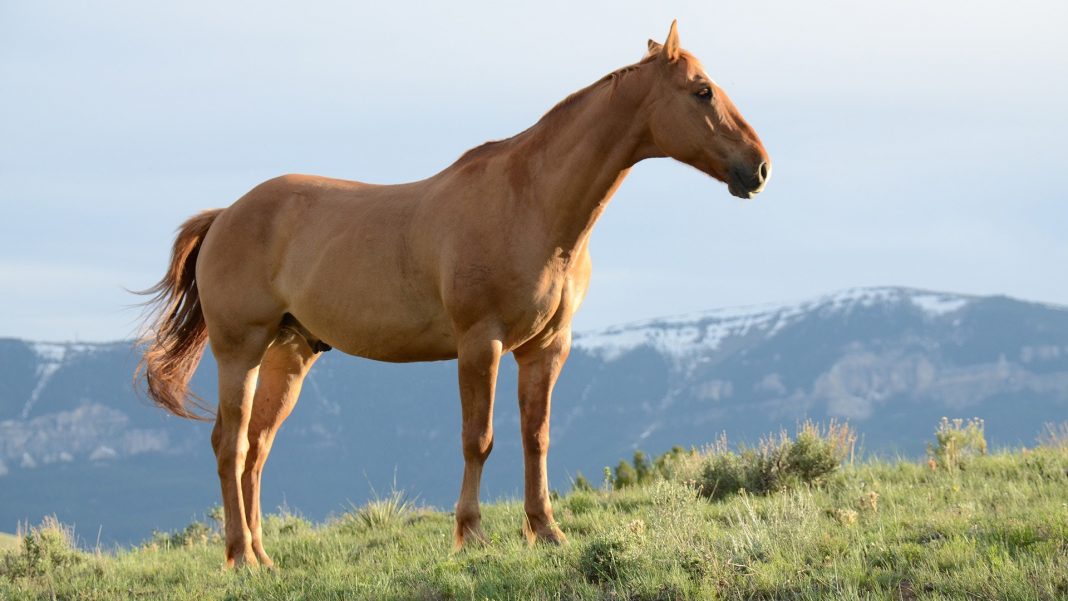







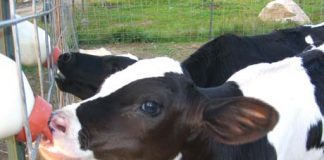
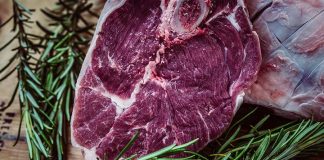





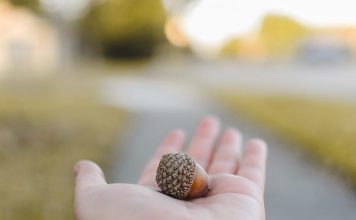
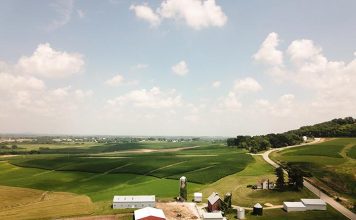
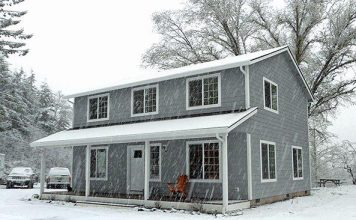
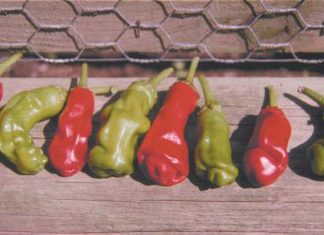
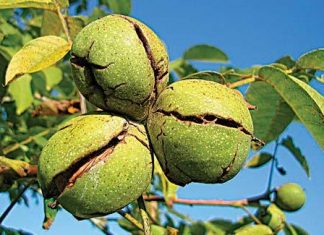
This is one of the most informative – and entertaining – articles I have read to date. Thank you!
I think goats are less popular for packing and the horses are more for packing today.
in new Zealand they are actually a pest too